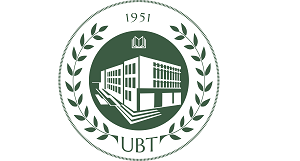VANYA DIMOVA1, DIMITAR GEORGIEV1, KRASIMIRA UZUNOVA2*, MARINA TOSHESKA3
|
1Department “Agricultural Engineering”, Faculty of Agriculture, Trakia University, 6000 Stara Zagora, Bulgaria 2Department “Total livestock” Veterinary Medicine Faculty, Trakia University, 6000 Stara Zagora, Bulgaria 3Association for rural development Local Action Group AGRO LIDER, 7500 Prilep, North Macedonia Abstract The purpose of the study is to determine the economically expedient roof thickness of a building for laying hens in use heat insulation from reeds and different fuel for heating (pellets and coal “Donbaski”). To achieve the purpose, 6 variants of a roof of 10, 15, 20, 25, 30 and 35 cm thick reeds plates are developed. The price of one reeds plate is calculated by including only the construction works for its preparation. The construction value of the ready roof (with VAT and transport) is obtained by adding to the value of the construction works for the preparation the value of the construction and assembly works of the site, the payment of the labor, the execution of the plank sheathing, the waterproofing and the laths. The annual energy losses through a 1 m2 of the roof structure are determined through the submitted methodology. The annual heat insulation costs are calculated as a sum of annual energy cost and the depreciation allowances. Verification of condensation of water vapor on the inner surface of the reed roof was carried out. These results show that by using fuel pellets, most appropriate thickness of the thermal insulation is 25 cm, and by using Donbas coal – 30 cm. All investigated variants of the reed roof meet hygienic requirements to prevent condensation of water vapor on its inner surface. Keywords: Reeds roofs of buildings, laying hens, pellets, coals, energy losses, annual costs |
